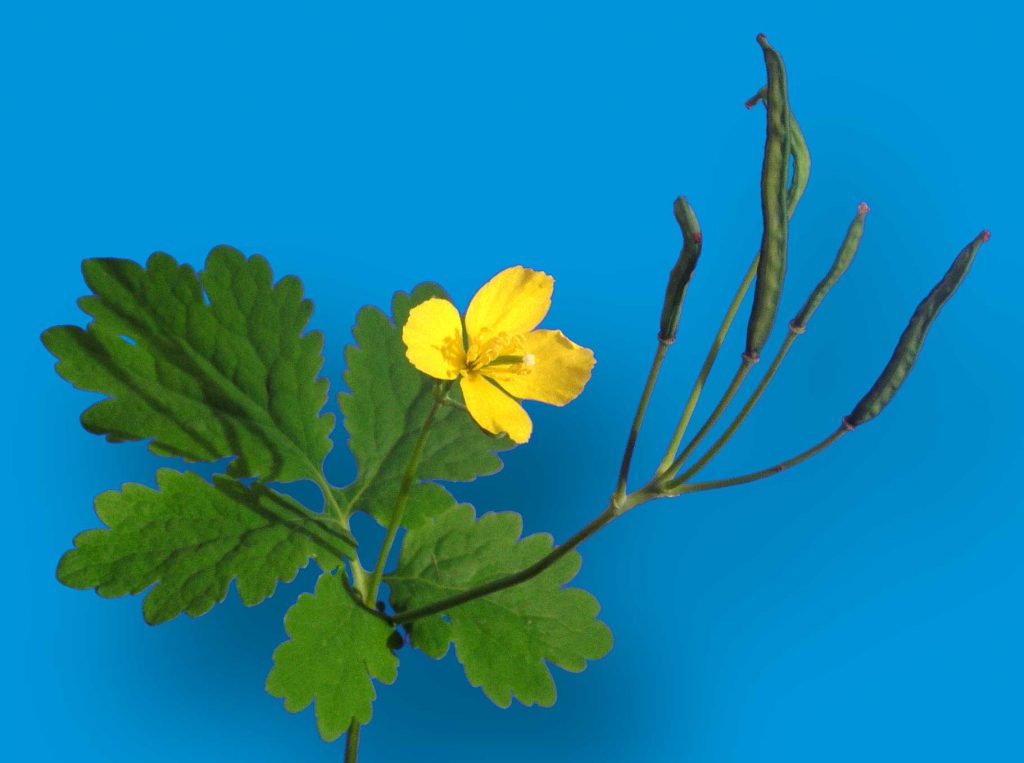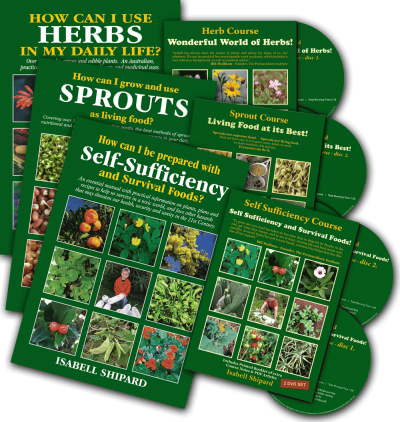Tetter Wort, Eye Herb, Garden Celandine, Chelidonium, Swallow Wort, Felon Wort, Wart Weed
Chelidonium majus F. Papaveraceae
Description
Perennial herb, developing a thick, fleshy, bright-orange taproot. Rosette of basal, attractively lobed, imparipinnate leaves to 40cm long, that are dark green (grey/green on the underside). Thin, leafy, hairy stems, bear a terminal cluster of bright-yellow, four-petalled flowers 2cm in diameter, followed by fine seed capsules to 5cm long, bearing 12-20 brown, pin-head size seeds. As soon as the capsules are dry, the seeds are released and self-seed readily, around the parent plant. To collect seed, the capsules need to be picked, as they mature to a yellow/brown colour, so that the seeds do not drop.
… … omitted text, please see How can I use HERBS in my daily life? for full text.

Medicinal Uses
This Eurasian herb has followed civilisation, with numerous folklore stories surrounding its uses. It was a popular herb at the height of the Roman Empire and revered during the Middle Ages for eczema and blood disorders, blindness and the plague. The doctrine of signatures hypothesis suggested that the orange sap, taken internally, was a remedy for liver complaints. One herbal writer even implied that placing the leaves under the foot, in the shoe, was a remedy for jaundice. Many, early herbal writers, had some remarkable results to report. Medieval herbalist, Tabernaemontanus, wrote that swallows were seen to pluck off celandine leaves and rub them on unopened eyes of their young, which was taken as an indication of the value of the herb in the treatment of eye diseases (which explains the common names ‘swallow wort’ and ‘eye herb’).
Uses of the juice, have included: eye ailments, cataracts, strained or failing vision, spots on the cornea, and bleeding or detached retina. Maria Treben in her herbal ‘Health through God’s pharmacy’ describes how to pick the leaf stems and gently wash, then crush the wet stem between the fingers and apply the juice to the closed eyelids, 2-3 times a day. Lie down when applying the juice, to allow the eyes to rest, closed for several minutes, so that the herb has time to do its healing work. Although the juice is not rubbed into the eyes, the eyes receive benefit from it, when rubbed over the eyelids. Maria also recommended at bedtime to place washed, lightly crushed leaves over the closed eyelids, held in place with a folded, soft cloth. She mentions, when using on the eyes, not to use the flower stems of the plant, as the juice in these stems is very thick.
Some time ago, a lady called for greater calendine, to use according to Maria Treben’s book for cataracts. Today, most timely, just as I am collating my information on this herb, she rang me to say it was her 79th birthday, and that she would like to tell me of her experience with the herb. Her specialist had been concerned at the deterioration of her eyes, due to cataracts and said he would need to put lenses in. But now, after she had been using the herb for a period of approximately 6 months, her specialist said her eyes were fine. Also, she was thrilled to pass her driver’s license and eye test, with flying colours. She warned to be careful, when applying the herb to the eyelids, as the sap of the plant can sting if it gets in the eyes. Sap from the leaves is applied 2-3 times a day to warts, corns, tinea, herpes, ringworm, cysts, ulcers and skin cancers. Take care when using the herb, as the orange sap may stain clothes and skin, and may cause a burning sensation to sensitive skins. For tender areas, cider vinegar can be mixed with the juice.
… … omitted text, please see How can I use HERBS in my daily life? for full text.


